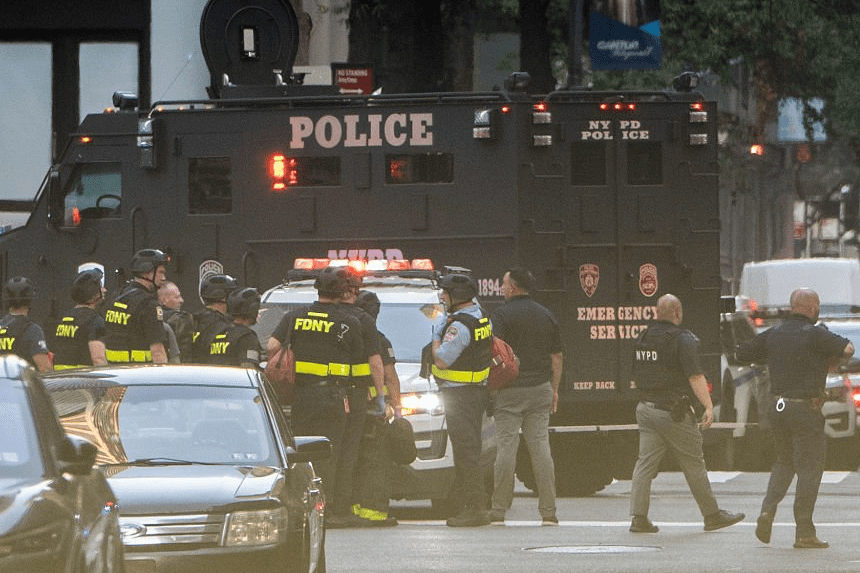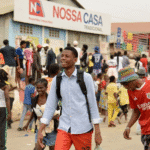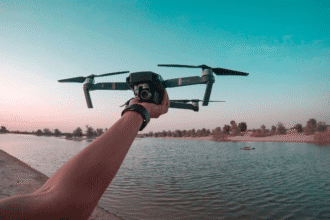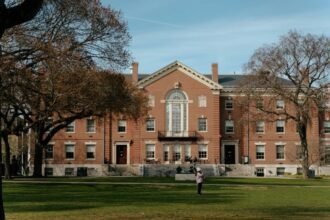On a normal sweltering July nighttime, New York City’s iconic 345 Park Avenue building had become the center of chaos and tragedy. The 44-story skyscraper, located in Midtown Manhattan—a hub for some of the world’s largest companies—transformed into a bustling workplace space, and for many workers, Monday night quickly became a nightmare.
As employees wrapped up their workday, unaware of the danger lurking within the construction, gunshots shattered the peace, sending people scrambling for protection. Barricading convention rooms and sending pressing messages to cherished ones, those inside feared for his or her lives because the gunman began his rampage. Jessica Chen, an employee on the second floor, described the moment of terror. “I texted my parents, ‘I love them,’” she recalled, the overwhelming fear that gripped her impossible to bring in phrases.
Four lives had been misplaced that night, including a devoted police officer, as gunfire erupted during the construction. The occasions had been prompted through a man from Las Vegas, whose journey to the building became one of the maximum surprising acts of violence the city has seen.
What Sparked the Deadly Rampage in Midtown Manhattan?
Around 6:30 PM EST, 27-year-old Shane Tamura from Las Vegas arrived in Manhattan. Having crossed numerous states, he parked his black BMW on Park Avenue, a mere block faraway from the town’s landmarks such as Rockefeller Center. Armed with an assault-style rifle, Tamura marched closer to the 345 Park Avenue construction, unaware that he could by no means reach his supposed goal—the National Football League (NFL) headquarters.
Instead, Tamura opened the fireplace inside the building’s lobby, capturing indiscriminately every person on his route. New York City Police Commissioner Jessica Tisch defined how Tamura commenced “spraying” the foyer with gunfire. Tragically, NYPD officer Didarul Islam changed into killing nearly instantly after confronting the gunman. Islam, a 36-12 months-old officer, lives in the back of his own family that will in no way be the same. Here is the link to our article on Firing Nuclear Workers
What Went Wrong with the Elevator Ride?
As the violence escalated, Tamura made his way to an elevator, hoping to reach the NFL’s places of work on the higher floors. However, in an important error, he entered the wrong elevator financial institution, arriving on the 33rd floor of the building, wherein the actual property company Rudin Management had its places of work.
Meanwhile, because the gunfire rang out inside the lobby, personnel rushed to send urgent emails and messages. Some human beings, like Chen, scrambled into conference rooms, barricading themselves for protection, while others frantically dispatched messages to warn others about the shooter. In a determined attempt to prevent in addition violence, a protection shield tried to disable the elevators, but tragically lost his life during the assault.
How Did Employees Respond to the Active Shooter Threat?
Inside the construction, panic unfolded fast. Employees at Blackstone, a financial corporation occupying part of the building, created makeshift barricades, piling desks and furnishings towards doors. Others attempted to escape, whilst some took cover, watching for instructions from law enforcement. At the same time, personnel in the NFL offices received messages warning them to live hidden and silent.
Despite their exceptional efforts, the shooter in no way reached his intended target. On the plaza outside, bystanders watched in horror as law enforcement swarmed the place. Nekeisha Lewis, who turned into nearby, recalled hearing the fast gunfire and seeing Tamura through the glass doors. As the shooter endured his rampage, others fled the building in fear. Here is the link to our article on Tragic Shooting Oversight
What Happened to the Gunman After the Attack?
Tamura eventually reached the thirty-third ground, wherein he shot and killed his very last sufferer. Afterward, he wandered through the building before taking his own life. A chilling three-page word was located on his frame, wherein he claimed to be afflicted by Chronic Traumatic Encephalopathy (CTE), a brain disorder linked to repeated head injuries. Tamura additionally referenced his intellectual fitness struggles, which had reputedly fueled his anger in the direction of the NFL. Law enforcement maintains to investigate Tamura’s adventure from Las Vegas to New York, tracing his moves and looking to piece together the overall scope of his tragic motivations.
Final Thoughts: The Legacy of New York’s 345 Park Avenue Shooting
The tragic occasions at 345 Park Avenue serve as a reminder of the dangers posed by New York shooting and unchecked violence in urban environments. As the metropolis reels from this assault, we must look for ways to prevent such tragedies. The shooter’s flawed elevator trip may also have saved countless lives; however, it also highlights how speedy chaos can spread inside the most unexpected places. The sufferers of this tragedy will not be forgotten, and the city’s dedication to ensuring safety in public spaces will remain a concern.








